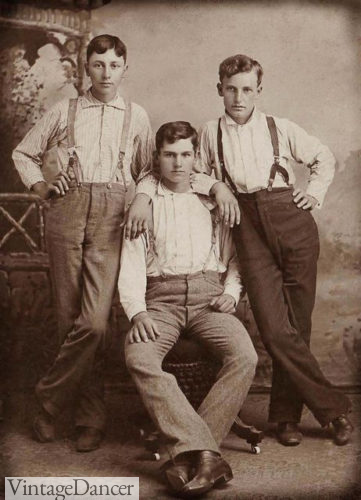The Sans-culottes were the working class of French peasants who fought for liberty during the French. Bloomers were an innovation of readers of the Water-Cure Journal a.

Working Class Dress Lovetoknow
The Gilded Age is an.

. One of the most NOTORIOUS madams in New York City was a woman named Kate Woods. In 19th century Europe box-making and packing was a highly respectable and urbane craft. Only the upper and middle class children went to school.
Fashionable colors were white flaxen brown grey grizzle iron grey and black but powdered wigsusually white or greywere also worn a trend that would persist throughout most of the eighteenth century. Instead they were sent out to work to earn money for their families. These were often cold and damp in the winter and hot in the summer with little light coming in from small windows.
Children from rich families were taught at home by a governess until they were 10 years old. She ran a number of brothels throughout the city for over half a. A servant might have a locked box in which.
This cap was a controversial symbol of. Fashion bloomers skirted 1851 caricature of fashion bloomers. Impressionist artists often left the comfort and solitude of their studios to venture out into public or to a distant location to paint a landscape.
It was the basis for the film Clueless after all owing to its timeless themes of class romance and self-awareness. In early 19th Century Ireland most children never went to school at all and grew up unable to read or write. The furnishings in servant quarters were basic and essential.
The 19th century was a time in which many artists began to produce notable works using various new methods of painting. Sans-culottes were known to wear the red cap of liberty also called the Phrygian cap. A box-maker and packer custom-made all boxes to fit the goods they stored and personally loaded and.
They were enthralled by the historical accuracy and attention to detail that was becoming increasingly influential in stage design. They were developed in the 19th century as a healthful and comfortable alternative to the heavy constricting dresses worn by American women. Fans of Downton Abbey will be delighted to dive into another sumptuous universe by creator Julian Fellowes this time based in late 19th century New York and airing on HBO.
While clothing was determined by the days activities the basic underclothes or foundational layer for all outfits a chemise drawers stockings corset and petticoats remained fairly consistent. France was the epicenter for much of the centurys most famous artists and art movements as Paris was a. A brothel could range from a simple boarding house to lush parlor houses with the LATEST interior fashions and designs.
Pictorial drama placed great emphasis on costume and reflected a fashionable interest in archaeology and history. They take their name from their best-known advocate the womens rights activist Amelia Bloomer. Some male servants slept downstairs to guard the family silver.
In the 19 th-century all women wore several layers of clothing though the clothing got more complicated depending on their socioeconomic status. 45 Novels Written In the 19th Century That Deserve a Place on the Modern Bookshelf. Fashion during the French Revolution greatly reflected the political climate of France.
Brothels were the pinnacle of sex for sale in 19th-century New York City. For a brief overview see the VAs Introduction to 19th-Century Fashion and History of Fashion 1840-1900For more in-depth information see the decade overviews and bibliographies below. Lace periwig and powder of the earlier eighteenth century.
In the latter half of the 19th century servants slept in attic bedrooms. Once a boy turned ten he went away to private fee. These evergreen concepts converge on the story of a wealthy young woman who fancies she is an expert matchmaker based on little more than.
Working class women wore the. The full-bottomed wig that had come into vogue in the late seventeenth century remained popular in the first decade of the eighteenth century. From the middle of the 19th century theatre began to take on a new respectability and draw in more middle-class audiences.

19th Century Fashion History Nineteenth Century 1800s 1840s 1850s Antebellum Victorian Victoriana Civil Wa Civil War Era Civil War Reenacting Civil War Fashion

Working Class Victorian Life Witness2fashion

Working Class Fashion Late 19th Century Ireland R Historicalcostuming

Stitching The Fashions Of The 19th Century Who Dressed The 19th Century Elite Historyextra

1910s Men S Working Class Clothing

Working Class Jacket 18th Century Fashion 18th Century Costume 18th Century Clothing

Working Class Costumes Of Scheveningen Netherlands 19th Century Fisherman Woman Stock Illustration Download Image Now Istock

Overalls For Women Fashion Edwardian Fashion Victorian Fashion
0 comments
Post a Comment